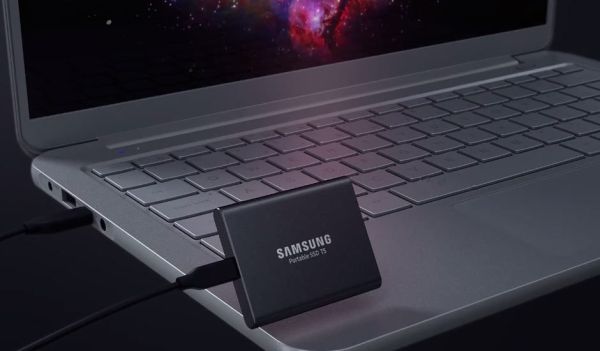
Back-to-school season is filled with the promise of fresh starts – new classes, new professors, and new possibilities. But being a student in 2025, academic success is not simply about how passionate you are or how hard you work. Academic success also requires preparedness with the right devices to help navigate what is now an increasingly digital landscape for learning. With hybrid learning, virtual projects, and total dependence on cloud-based resources, educational technology—often shortened to ed tech—has become the foundation of modern classrooms.
Students today require modern and portable devices that combine performance with reliability. They require more than devices that can keep pace with demanding academic coursework; they need devices that account for their busy lifestyles in which they are constantly between lectures, dorm rooms, libraries, and their social lives, like even online research platforms like Google Scholar.

Although the list could include many gadgets, we will only touch on a few of the best back-to-school ed-tech devices for students to consider in 2025.
No matter your major, your laptop or tablet is the center of your life. From virtually attending lectures, writing essays, and editing presentations, your laptop/tablet will be the basis of your academic workflow. Many students preparing for careers in ed tech or searching for jobs or internships will find these devices essential for both coursework and career readiness.
Tip: If your budget is minimal, consider combining beautiful form and function with a laptop that offers great battery life and durability. Most mid-tier laptops with dedicated specs will work great and last you throughout your academic years.

Campus life can be quite noisy—loud roommates, the cleaning crew, and city commuting can make it hard to concentrate. Noise-cancelling headphones (ANC) can create a bubble to study in, no matter where you are. Both of these are central to the ed tech ecosystem. Why are they necessary?
For noise cancelling, look for Adaptive Noise Cancelling that adjusts as your surroundings change. For tackling distractions and long study sessions, consider over-ear models for extended study periods and earbuds for commuting, offering portability between classroom sessions. For connectivity, look for a multipoint switch that allows you to switch between your laptop and phone seamlessly. For battery life, 20-30 hours (over-ear) or 6-8 hours.
Imagine losing your research paper or project, only hours before submission. A portable SSD keeps that nightmare at bay with fast, reliable, and safe storage.
Why do students need these?

Ideal specifications for portable SSDs: Capacity (1TB is the sweet spot), USB-C/Thunderbolt compatibility (for newer devices), and Rugged casing (or at least decent) for durability. Pairing an SSD with cloud storage (Google Drive, OneDrive, iCloud) also ensures backups, which is especially important in an era of ed tech use when digital literacy and data security are as critical as reducing unemployment among graduates entering competitive job markets.
Hybrid/remote learning still has a place in 2025 (Unfortunately). Whether you are working on group projects, virtual office hours, or online presentations, you should consider how you appear on screen. When should you upgrade from the built-in devices?
Webcams: 1080p or 4K capability, featuring autofocus and low-light correction, will have a considerable impact on the clarity of your video.
Microphones: Listening to clearly articulated voices will prevent confusion in class discussions.
Note: If you have a budget, buy the microphone first. Clear audio impacts how your content is perceived more than video. With the growth of remote collaboration and science daily reporting on communication technologies, having reliable AV gear is becoming part of professional preparedness. Clear video and especially clear audio help you communicate effectively—an underrated but important part of succeeding in digital ed tech environments.

Nothing derails a study session more than a dead battery. Students rely on several gadgets, and for this reason, portable power banks and multiport chargers will be essential in 2025.
Power banks: 20,000 mAh+ supporting USB-C PD fast charging that can power laptops and phones.
Multiport GaN chargers: Slim, efficient, and capable of charging multiple devices.
Safety: Over-voltage and heat protection for peace of mind.
Pro tip: Carry a slim/lightweight power bank in your bag for daily use. For longer trips, consider keeping a larger power bank in your dorm to keep your ed tech tools running when you need them most.

Budget Student: A reliable laptop/tablet. Noise-cancelling earbuds to stay focused. Medium-capacity power bank, just in case.
Splurge Student: Add a 1TB portable SSD, as you will want to protect your data. Get over-ear ANC headphones for ultimate comfort while working. Get a webcam and microphone to have professional-level video calls! Bonus – You can also get smart pens and eReaders if you need both types of resources from these devices.
Going back to school is more than an established rite of the fall. It’s about investing in tools that help you leverage your time, attention, productivity, and (hopefully) peace of mind. In 2025, a computer, headphones, off-device storage, and power supply options provide the foundation for a good student tech kit.
With the right ed tech tools, you’re not just prepared for class—you’re prepared to excel in a future where technology and education are inseparable.
Anything beyond these – like a webcam, microphone, or specialized gear—can help you thrive in both classroom and online modalities. As the demand for ed tech jobs rises, and as discussions on unemployment and workforce readiness continue, having the right educational technology tools is not just about academic success but about preparing for the future. With the right devices, you’re not just prepared for class—you’re prepared to excel.